Monira Al Qadiri
Mutant Passages
22 Apr - 02 Jul 2023
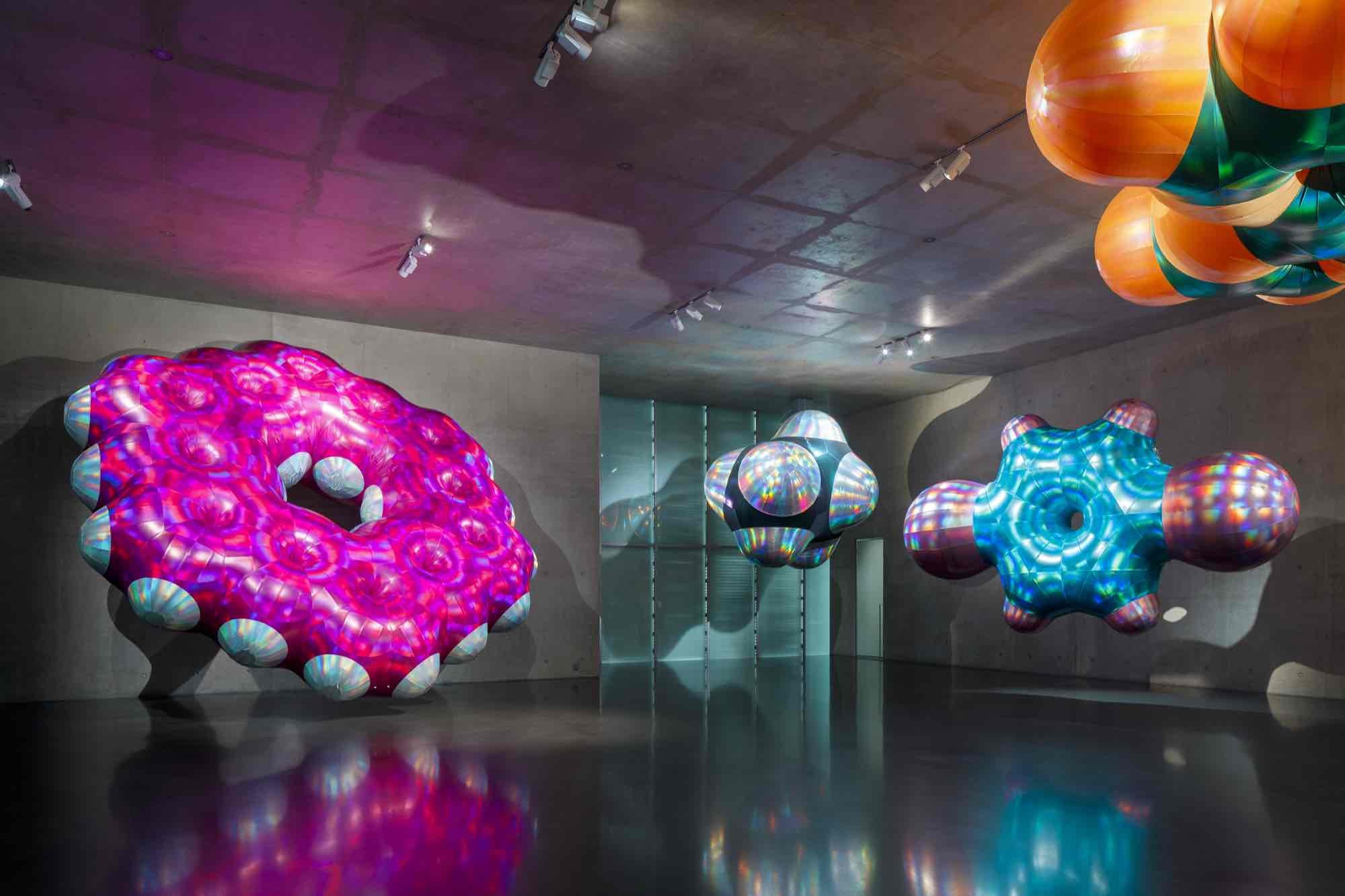
Monira Al Qadiri
BENZENE FLOAT
Installation view ground floor Kunsthaus Bregenz, 2023
Produced with the Sponsorship of ICD Brookfield Place
Photo: Markus Tretter
Courtesy of the artist
© Monira Al Qadiri, Kunsthaus Bregenz
BENZENE FLOAT
Installation view ground floor Kunsthaus Bregenz, 2023
Produced with the Sponsorship of ICD Brookfield Place
Photo: Markus Tretter
Courtesy of the artist
© Monira Al Qadiri, Kunsthaus Bregenz

Monira Al Qadiri
BENZENE FLOAT
Propane; Para-Benzene, 2023
Installation view ground floor Kunsthaus Bregenz, 2023
Produced with the Sponsorship of ICD Brookfield Place
Photo: Markus Tretter
Courtesy of the artist
© Monira Al Qadiri, Kunsthaus Bregenz
BENZENE FLOAT
Propane; Para-Benzene, 2023
Installation view ground floor Kunsthaus Bregenz, 2023
Produced with the Sponsorship of ICD Brookfield Place
Photo: Markus Tretter
Courtesy of the artist
© Monira Al Qadiri, Kunsthaus Bregenz
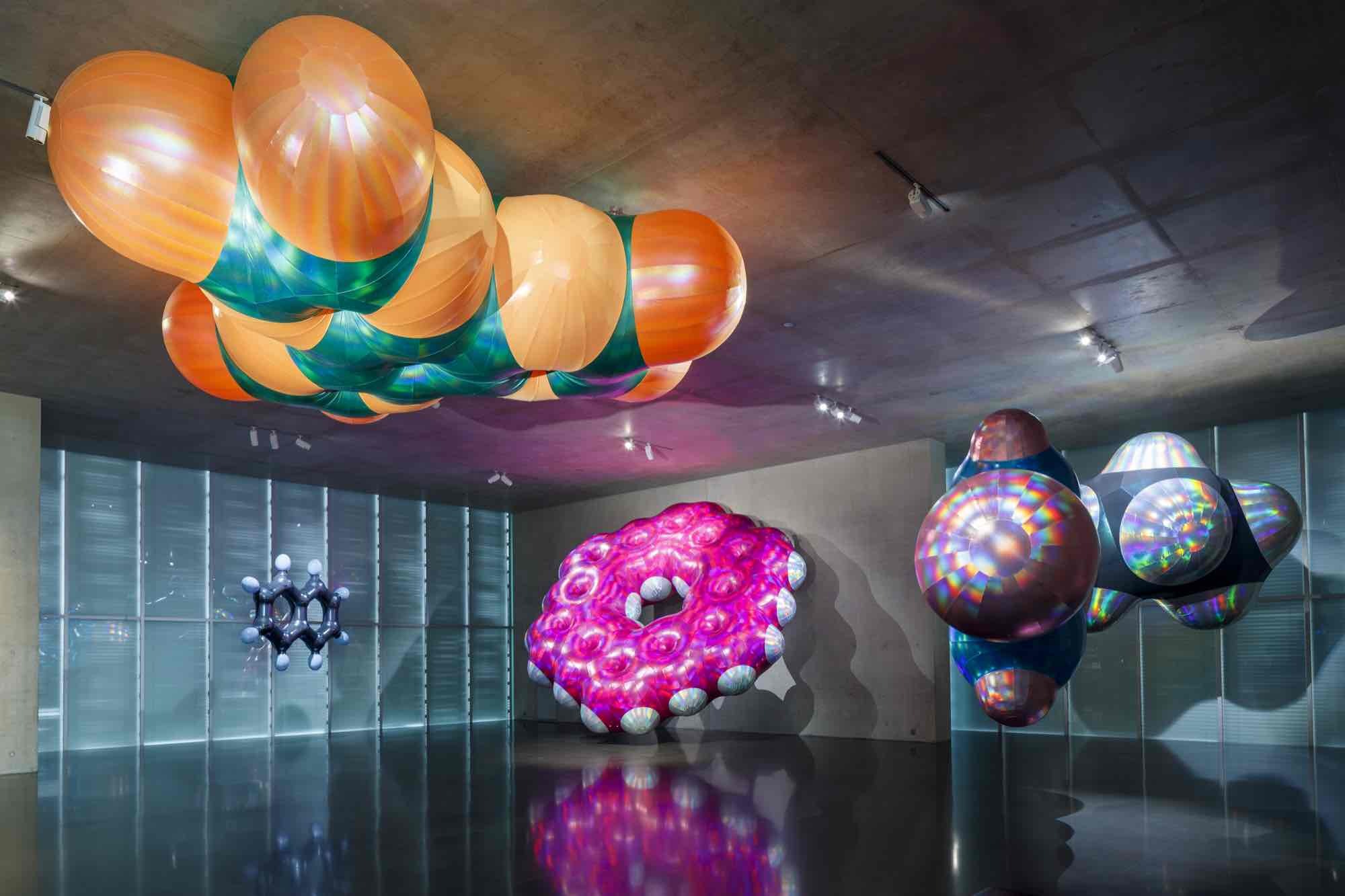
Monira Al Qadiri
BENZENE FLOAT
Installation view ground floor Kunsthaus Bregenz, 2023
Produced with the Sponsorship of ICD Brookfield Place
Photo: Markus Tretter
Courtesy of the artist
© Monira Al Qadiri, Kunsthaus Bregenz
BENZENE FLOAT
Installation view ground floor Kunsthaus Bregenz, 2023
Produced with the Sponsorship of ICD Brookfield Place
Photo: Markus Tretter
Courtesy of the artist
© Monira Al Qadiri, Kunsthaus Bregenz

Monira Al Qadiri
BENZENE FLOAT
Para-Benzene (Detail), 2023
Installation view ground floor Kunsthaus Bregenz, 2023
Produced with the Sponsorship of ICD Brookfield Place
Photo: Markus Tretter
Courtesy of the artist
© Monira Al Qadiri, Kunsthaus Bregenz
BENZENE FLOAT
Para-Benzene (Detail), 2023
Installation view ground floor Kunsthaus Bregenz, 2023
Produced with the Sponsorship of ICD Brookfield Place
Photo: Markus Tretter
Courtesy of the artist
© Monira Al Qadiri, Kunsthaus Bregenz

Monira Al Qadiri
Choreography of Alien Technology
Installation view first floor Kunsthaus Bregenz, 2023
Photo: Markus Tretter
Courtesy of the artist and König Galerie
© Monira Al Qadiri, Kunsthaus Bregenz
Choreography of Alien Technology
Installation view first floor Kunsthaus Bregenz, 2023
Photo: Markus Tretter
Courtesy of the artist and König Galerie
© Monira Al Qadiri, Kunsthaus Bregenz
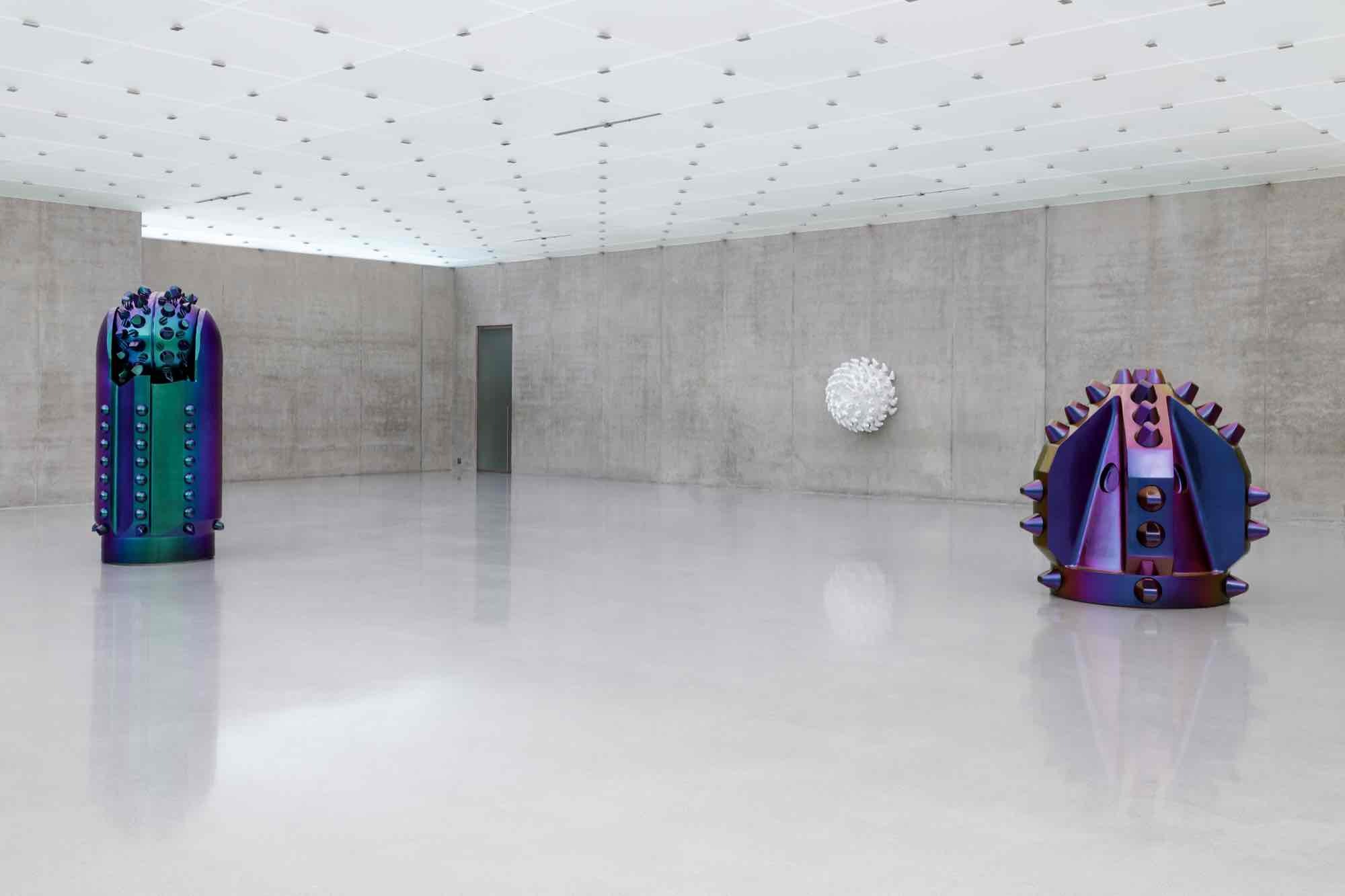
Monira Al Qadiri
Choreography of Alien Technology
Installation view first floor Kunsthaus Bregenz, 2023
Photo: Markus Tretter
Courtesy of the artist and König Galerie
© Monira Al Qadiri, Kunsthaus Bregenz
Choreography of Alien Technology
Installation view first floor Kunsthaus Bregenz, 2023
Photo: Markus Tretter
Courtesy of the artist and König Galerie
© Monira Al Qadiri, Kunsthaus Bregenz
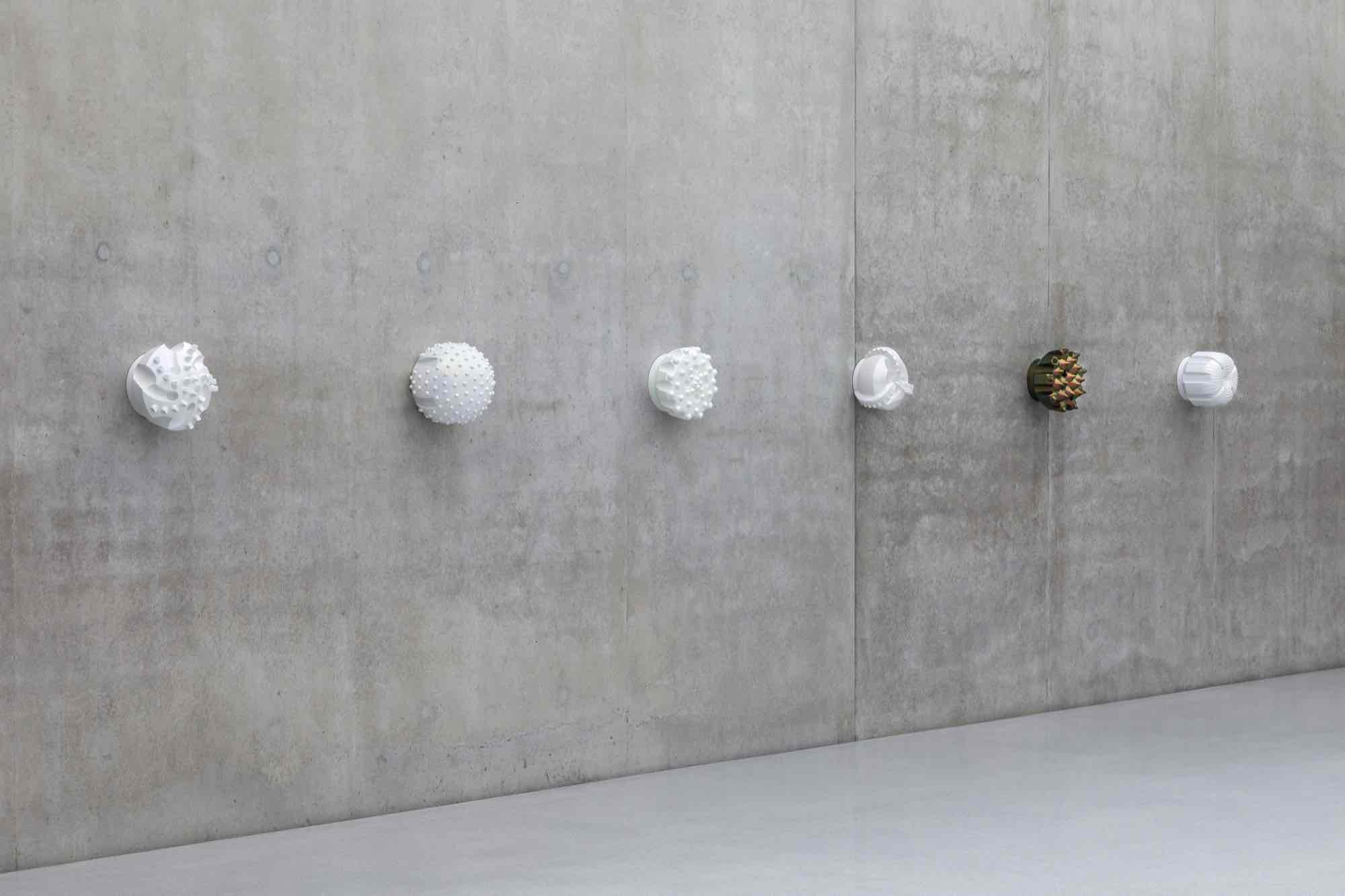
Monira Al Qadiri
Choreography of Alien Technology
Spectral Pearl Series Cusp; Rose; Pod; Bud; Shell; Crest, 2023
Installation view first floor Kunsthaus Bregenz, 2023
Photo: Markus Tretter
Courtesy of the artist and König Galerie
© Monira Al Qadiri, Kunsthaus Bregenz
Choreography of Alien Technology
Spectral Pearl Series Cusp; Rose; Pod; Bud; Shell; Crest, 2023
Installation view first floor Kunsthaus Bregenz, 2023
Photo: Markus Tretter
Courtesy of the artist and König Galerie
© Monira Al Qadiri, Kunsthaus Bregenz

Monira Al Qadiri
Choreography of Alien Technology
Shell, 2023
Installation view first floor Kunsthaus Bregenz, 2023
Photo: Markus Tretter
Courtesy of the artist and König Galerie
© Monira Al Qadiri, Kunsthaus Bregenz
Choreography of Alien Technology
Shell, 2023
Installation view first floor Kunsthaus Bregenz, 2023
Photo: Markus Tretter
Courtesy of the artist and König Galerie
© Monira Al Qadiri, Kunsthaus Bregenz
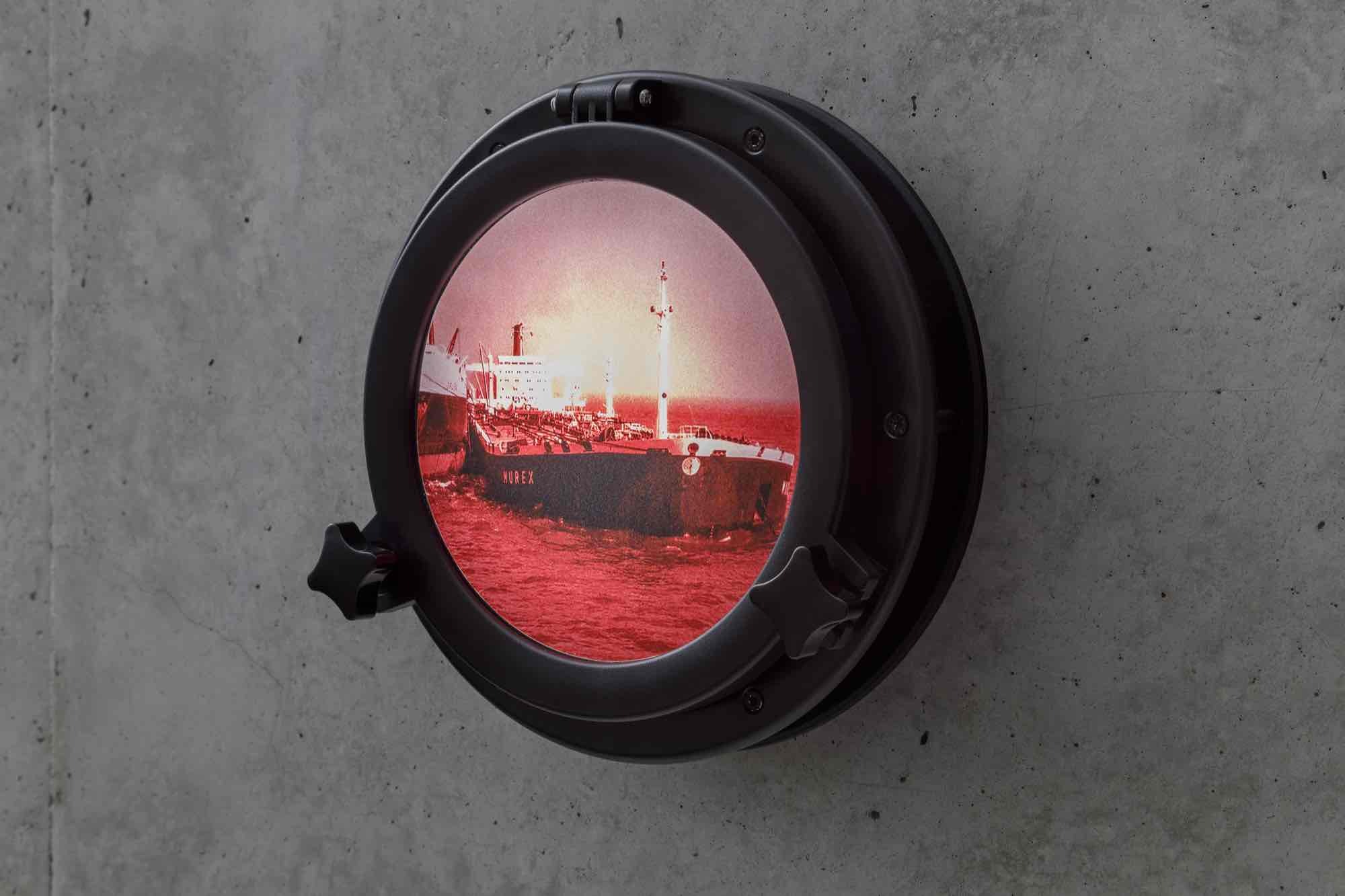
Monira Al Qadiri
SS Murex, 2023
Installation view staircase Kunsthaus Bregenz, 2023
Photo: Markus Tretter
Courtesy of the artist
© Monira Al Qadiri, Kunsthaus Bregenz
SS Murex, 2023
Installation view staircase Kunsthaus Bregenz, 2023
Photo: Markus Tretter
Courtesy of the artist
© Monira Al Qadiri, Kunsthaus Bregenz
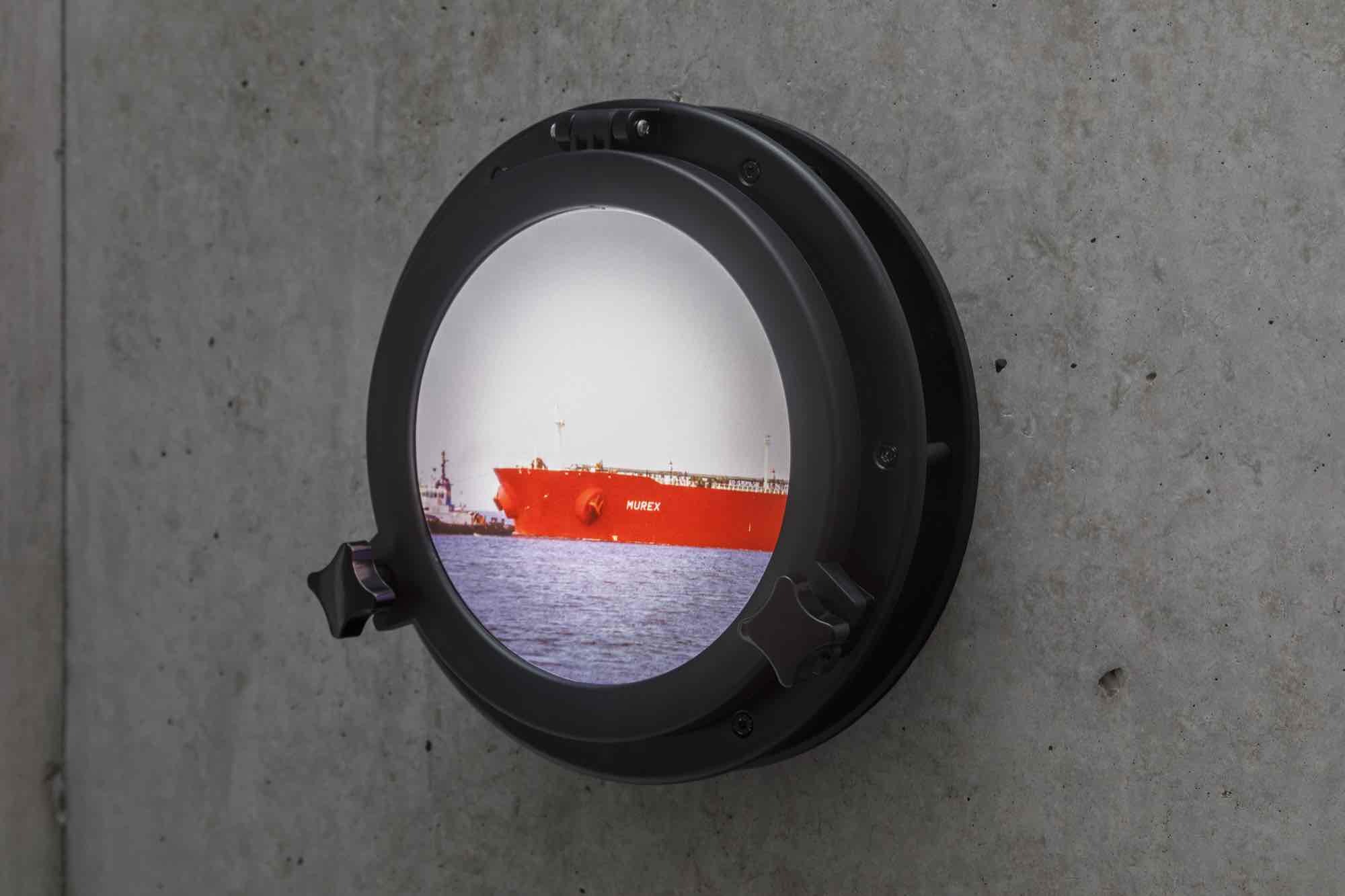
Monira Al Qadiri
SS Murex, 2023
Installation view staircase Kunsthaus Bregenz, 2023
Photo: Markus Tretter
Courtesy of the artist
© Monira Al Qadiri, Kunsthaus Bregenz
SS Murex, 2023
Installation view staircase Kunsthaus Bregenz, 2023
Photo: Markus Tretter
Courtesy of the artist
© Monira Al Qadiri, Kunsthaus Bregenz
An alien lives in our midst. It is an ancient alien, one that is hundreds of millions of years old. It is a pilot of flying and non-flying objects; a heater of homes; a master of sanitation; a fashion impresario; a beauty expert; an addict of convenience; a healer of wounds; a maker of wars; a polluter of air; a killer of birds and a destroyer of worlds. This invisible chameleonic character inserts itself into every orifice of our modern existence, at times passing through entirely unnoticed. Who is this ultimate shapeshifter lurking in the background of our lives? The name of this omnipresent being is "Oil".
Oil (petroleum) is not merely a source of fuel, but it is also the mother of a myriad of substances that we cannot live without in our daily affairs – the by-products of the petrochemical industry: gasoline, diesel, benzene, asphalt, plastic, polyester, cosmetics, medicine, paint. This Frankenstein-esque mutant transforms into so many forms that it is difficult to comprehend how many mutations it makes and to what scale it extends. Regarded as the harbinger of both fantastic miracles and horrifying curses, it has laid a double-pronged trap for us humans of the modern world, one in which we find ourselves stuck in the throes of an eternal dilemma, seemingly without any means of escaping it. Will we ever be rid of this strange condition of demonic possession we find ourselves in? Can we someday overcome this freak petroleum interval in history and pass over to a new ”ever clear“ reality away from the fossils’ descendants? Will there soon be a scientific breakthrough that unfastens our chains, forever freeing us from the grip of the dark ooze, or will we continue our slow descent into certain climatic apocalypse, constantly bathed in it, wallowing in a dark spiral towards the unknown?
There are those of us, who are chained to oil in a different way: we enable its destructive course across the globe, generating immense amounts of wealth. Ephemeral and fleeting, the sparkling seduction that the promise of un-limited riches emanates is multicolored. It is blinding. The shimmering hues of pinks, greens, silvers, blues and purples: the iridescent sheen of oil tricks the eye, like a shiny pearl, projecting hallucinations of celebrity and power into the mind of its viewer. “You will never be poor again,” it whispers softly. But the trickster genie makes us forget the true price of this prosperity: a mountain of irreversible debt we have accrued to the only planet we will ever know.
The dramaturgy of this exhibition follows the varying paths that oil takes, guiding us through the different formations and stories it generates; the ruptures in history and biology it has induced, the machinery and memories associated with it, and the existential questions it forces us to consider.
Monira Al Qadiri
-
"Mutant Passages" comprises entirely new works conceived for Kunsthaus Bregenz, that follow in-depth research, forms and ideas developed by the artist over the last decade around the subject of oil, culminating in this body of work.
In the foyer, large inflatable sculptures greet us, hovering overhead and within the space, coated in iridescent colorful fabrics. The work "Benzene Float" depicts scientific drawings (technically named “space-filling models” in chemical terminology) of the molecular structure of benzene, propane gas, naphthalene, and other petrochemical substances. The works’ exaggerated forms amplify their presence in modern society, confronting us with their grasp over our lives.
On the first floor, several large-scale sculptures rotate quietly, their iridescent colors shimmering and changing with their movement in space. They resemble some kind of bioluminescent marine life, especially with their recast surfaces, or some futuristic alien. But they are in fact industrial objects: drill bits used to find oil. Their dichroic colors allude to the pearling industry of the Persian Gulf, a forgotten history that has all but disappeared after the discovery of oil in the region. "Choreography of Alien Technology" aims to bridge the relationship between pearls and oil, through their colors and forms, presenting more vividly the historical gap that oil has created. The iridescent nature of the color reimagines itself as the carrier of wealth, traveling between pearls, oil, or even another future being.
On the second floor, two reddish mirror-imaged sculptures of gastropod seashells stand side by side, speaking to each other. They both have a hollow cavity in the lower half of their bodies, inviting passers-by to press their ears and heads against them, perhaps expecting to hear the sound of rolling ocean waves. Instead, they encounter an unexpected conversation between two androgynous voices, recalling how they had unintentionally changed genders while lying in the ocean. In "Gastromancer", the impact the oil industry has on marine life is on display, and not in ways visibly known to us. The reddish biocide paint tributyltin, known as TBT, protects oil tankers from accruing algae, barnacles and mussels (in a process commonly called “anti-fouling”), but it has also caused strange and bizarre changes and contaminations in the natural environment due to its rapid leakage into the water. For example, TBT contamination causes female murex mollusks to change their gender into males, impairing their ability to spawn and devastating gastropod populations.
On the third floor, the installation "Onus" is composed of multiple solid glass sculptures of birds that are dispersed over a white floor. During the Gulf War in Kuwait (1990–91), the carcasses of birds, fish, livestock, and many other animals regularly lined the coastline and deserts of the nation – the result of massive toxic clouds fed by the hundreds of torched oil wells. It was and still is one of the worst man-made environmental disasters of all time. However, when images of these oil-drenched animals were disseminated abroad, many people believed them to be fake.
While studying at university in Japan, the artist was confronted with iconic photographs of oil covered birds taken during the war that were presented during a class as being merely exercises in propaganda. Although a witness to the destruction herself, her lived experience was questioned, and under the influence of others, was even distorted. Through these works, the artist has attempted to breathe life back into her memories by recreating these birds as glass objects, to make both tangible the destruction she witnessed, while demonstrating the fragility of our memories when images move across time, space and cultures. The work conveys the artist’s burden and duty to prove the loss that has been suffered.
-
Monira Al Qadiri (b. 1983, Senegal) grew up in Kuwait. In 2010 she received her doctorate from the Tokyo University of the Arts. Al Qadiri lives and works in Berlin. The artist has participated in several solo exhibitions at such venues as the Haus der Kunst in Munich, at the Guggenheim Museum Bilbao and at the Sursock Museum in Beirut. Her works have also been shown in group exhibitions at the Palais de Tokyo in Paris and MoMA PS1 in New York, at the Van Abbemuseum in Eindhoven and the Jameel Arts Centre in Dubai. In 2022 she participated in the Venice Biennale, this year her work is part of Sharjah Biennial 15: "Thinking Historically in the Present".
Oil (petroleum) is not merely a source of fuel, but it is also the mother of a myriad of substances that we cannot live without in our daily affairs – the by-products of the petrochemical industry: gasoline, diesel, benzene, asphalt, plastic, polyester, cosmetics, medicine, paint. This Frankenstein-esque mutant transforms into so many forms that it is difficult to comprehend how many mutations it makes and to what scale it extends. Regarded as the harbinger of both fantastic miracles and horrifying curses, it has laid a double-pronged trap for us humans of the modern world, one in which we find ourselves stuck in the throes of an eternal dilemma, seemingly without any means of escaping it. Will we ever be rid of this strange condition of demonic possession we find ourselves in? Can we someday overcome this freak petroleum interval in history and pass over to a new ”ever clear“ reality away from the fossils’ descendants? Will there soon be a scientific breakthrough that unfastens our chains, forever freeing us from the grip of the dark ooze, or will we continue our slow descent into certain climatic apocalypse, constantly bathed in it, wallowing in a dark spiral towards the unknown?
There are those of us, who are chained to oil in a different way: we enable its destructive course across the globe, generating immense amounts of wealth. Ephemeral and fleeting, the sparkling seduction that the promise of un-limited riches emanates is multicolored. It is blinding. The shimmering hues of pinks, greens, silvers, blues and purples: the iridescent sheen of oil tricks the eye, like a shiny pearl, projecting hallucinations of celebrity and power into the mind of its viewer. “You will never be poor again,” it whispers softly. But the trickster genie makes us forget the true price of this prosperity: a mountain of irreversible debt we have accrued to the only planet we will ever know.
The dramaturgy of this exhibition follows the varying paths that oil takes, guiding us through the different formations and stories it generates; the ruptures in history and biology it has induced, the machinery and memories associated with it, and the existential questions it forces us to consider.
Monira Al Qadiri
-
"Mutant Passages" comprises entirely new works conceived for Kunsthaus Bregenz, that follow in-depth research, forms and ideas developed by the artist over the last decade around the subject of oil, culminating in this body of work.
In the foyer, large inflatable sculptures greet us, hovering overhead and within the space, coated in iridescent colorful fabrics. The work "Benzene Float" depicts scientific drawings (technically named “space-filling models” in chemical terminology) of the molecular structure of benzene, propane gas, naphthalene, and other petrochemical substances. The works’ exaggerated forms amplify their presence in modern society, confronting us with their grasp over our lives.
On the first floor, several large-scale sculptures rotate quietly, their iridescent colors shimmering and changing with their movement in space. They resemble some kind of bioluminescent marine life, especially with their recast surfaces, or some futuristic alien. But they are in fact industrial objects: drill bits used to find oil. Their dichroic colors allude to the pearling industry of the Persian Gulf, a forgotten history that has all but disappeared after the discovery of oil in the region. "Choreography of Alien Technology" aims to bridge the relationship between pearls and oil, through their colors and forms, presenting more vividly the historical gap that oil has created. The iridescent nature of the color reimagines itself as the carrier of wealth, traveling between pearls, oil, or even another future being.
On the second floor, two reddish mirror-imaged sculptures of gastropod seashells stand side by side, speaking to each other. They both have a hollow cavity in the lower half of their bodies, inviting passers-by to press their ears and heads against them, perhaps expecting to hear the sound of rolling ocean waves. Instead, they encounter an unexpected conversation between two androgynous voices, recalling how they had unintentionally changed genders while lying in the ocean. In "Gastromancer", the impact the oil industry has on marine life is on display, and not in ways visibly known to us. The reddish biocide paint tributyltin, known as TBT, protects oil tankers from accruing algae, barnacles and mussels (in a process commonly called “anti-fouling”), but it has also caused strange and bizarre changes and contaminations in the natural environment due to its rapid leakage into the water. For example, TBT contamination causes female murex mollusks to change their gender into males, impairing their ability to spawn and devastating gastropod populations.
On the third floor, the installation "Onus" is composed of multiple solid glass sculptures of birds that are dispersed over a white floor. During the Gulf War in Kuwait (1990–91), the carcasses of birds, fish, livestock, and many other animals regularly lined the coastline and deserts of the nation – the result of massive toxic clouds fed by the hundreds of torched oil wells. It was and still is one of the worst man-made environmental disasters of all time. However, when images of these oil-drenched animals were disseminated abroad, many people believed them to be fake.
While studying at university in Japan, the artist was confronted with iconic photographs of oil covered birds taken during the war that were presented during a class as being merely exercises in propaganda. Although a witness to the destruction herself, her lived experience was questioned, and under the influence of others, was even distorted. Through these works, the artist has attempted to breathe life back into her memories by recreating these birds as glass objects, to make both tangible the destruction she witnessed, while demonstrating the fragility of our memories when images move across time, space and cultures. The work conveys the artist’s burden and duty to prove the loss that has been suffered.
-
Monira Al Qadiri (b. 1983, Senegal) grew up in Kuwait. In 2010 she received her doctorate from the Tokyo University of the Arts. Al Qadiri lives and works in Berlin. The artist has participated in several solo exhibitions at such venues as the Haus der Kunst in Munich, at the Guggenheim Museum Bilbao and at the Sursock Museum in Beirut. Her works have also been shown in group exhibitions at the Palais de Tokyo in Paris and MoMA PS1 in New York, at the Van Abbemuseum in Eindhoven and the Jameel Arts Centre in Dubai. In 2022 she participated in the Venice Biennale, this year her work is part of Sharjah Biennial 15: "Thinking Historically in the Present".
